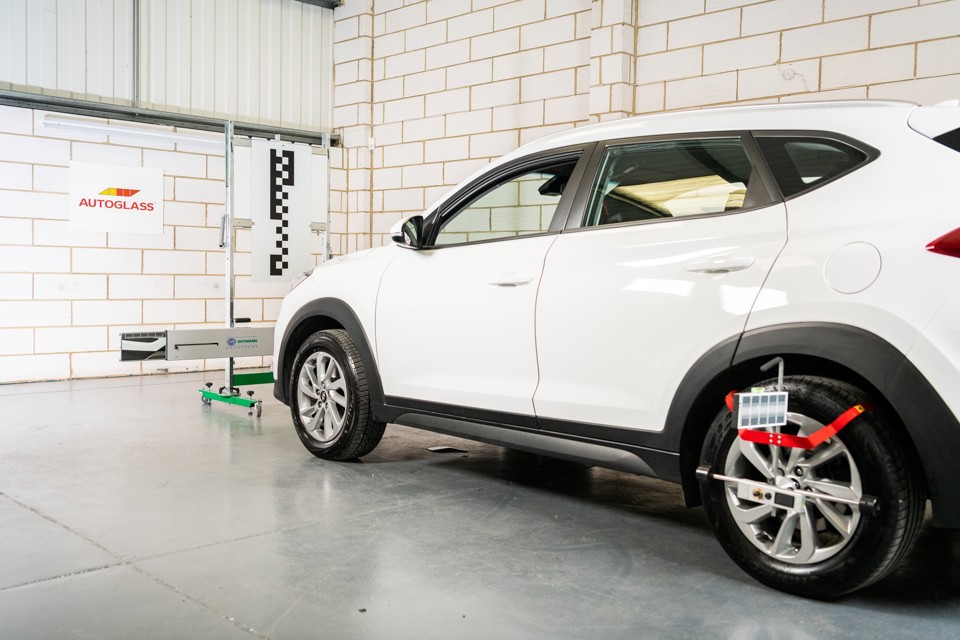Thatcham Research has outlined how automotive repair and insurance companies should manage vehicle repairs involving Advanced Driver Assistance Systems (ADAS).
The Institute of the Motor Industry (IMI) today (May 9) welcomed Thatcham’s new guidelines, which will attempt to underline the importance of the motor retail sector being effectively equipped to manage the advancing automotive technologies now more prevalent on UK roads.
Thatcham released its guidance ahead of publication of a full Code of Practice later this year and has already commenced a round of consultation with OEMs, insurers, windscreen repair and replacement companies, equipment providers and repairers.
More than 10% of vehicles on the road today are fitted with Autonomous Emergency Braking, a form of ADAS. However, Thatcham says there has so far been a dearth of information on how to approach the repair of these safety critical systems.
Richard Billyeald, chief technical officer at Thatcham Research, said: “As ADAS continues its ever-increasing penetration into the car parc, the lack of a clear approach to the repair of ADAS-equipped vehicles is having an effect across the whole repair industry.
“For their own peace of mind, insurers and repairers need proof that they have taken all reasonable steps to reinstate the safety functions of a vehicle before returning it to the road.”
The Thatcham Research position on the safe repair of ADAS is: “If ADAS sensors, or parts that are in proximity to ADAS sensors, are included in a repair specification, calibration post repair must be completed to confirm sensors are functioning to the vehicle manufacturers’ specified tolerances.”
Thatcham Research advises that where no specific repair guidance exists, and functionality cannot be proven through systemised calibration, then advice should be sought from the vehicle manufacturer’s dealership network and appropriate action taken prior to vehicle release.
Billyeald added: “ADAS supports the driver to prevent a crash in the first place. This represents a huge step forwards for vehicle safety and the transition into more advanced assisted and Automated Driving will continue to raise the safety bar. However, whilst that benefit may be fully realised on a new car, maintaining it once a car has been repaired is vital.
“The whole industry needs to work together to make sure ADAS repairs are safe and vehicles are returned to the road quickly and efficiently.
“Equipment suppliers must ensure that verifiable evidence of a successful calibration is provided.
“Repairers must invest in training to ensure competent persons are reinstating ADAS safely. And Vehicle Manufacturers must provide ADAS fitment data and consistent advice around which repair scenarios will result in successful ADAS calibration.”
IMI chief executive, Steve Nash, said: “The IMI has been championing the setting of standards to ensure that technicians are appropriately qualified to work on vehicles involving ADAS as well as electrified vehicles through the IMI TechSafe banner.
“We also launched last year an IMI ADAS Accreditation to help ensure technicians have the expertise to work with ADAS features in vehicles, protecting the safety of drivers when this technology is activated.”
The IMI ADAS accreditation has been designed and developed in partnership with key industry organisations including Thatcham Research.
By doing this, the IMI has ensured that the new accreditation is fit for purpose - effectively raising standards in ADAS.
“Motorists need to have the peace of mind that repairs undertaken after an accident are done so that ADAS technology remains wholly effective”, said Steve Nash.
“We are therefore urging motor retailers and garages, accident repair shops and windscreen repair businesses to invest in continuous training to make sure their technicians are equipped with the right skills to be able to handle this new and rapidly evolving technology.
“IMI ADAS Accreditation helps to establish a recognized mark of quality for those needing to demonstrate their competence to safely work with ADAS.”















Login to comment
Comments
No comments have been made yet.